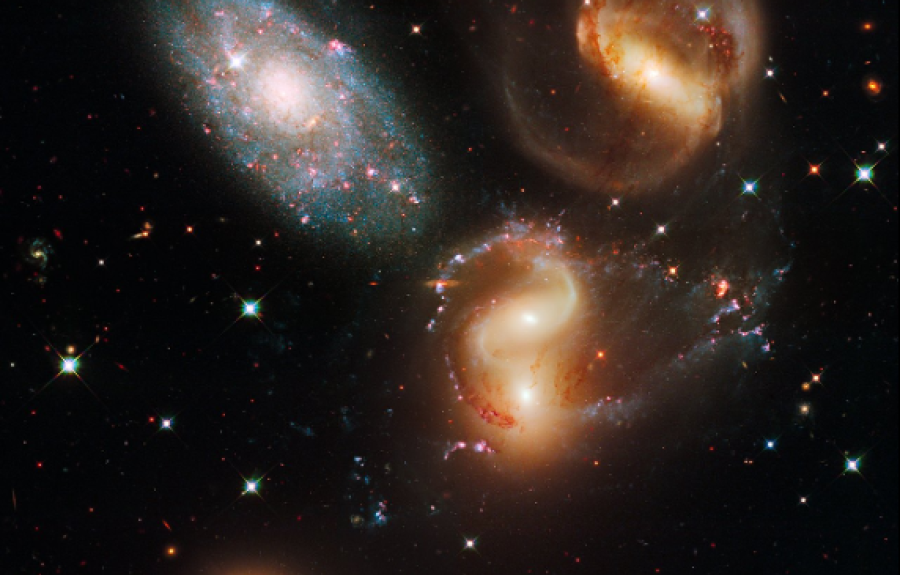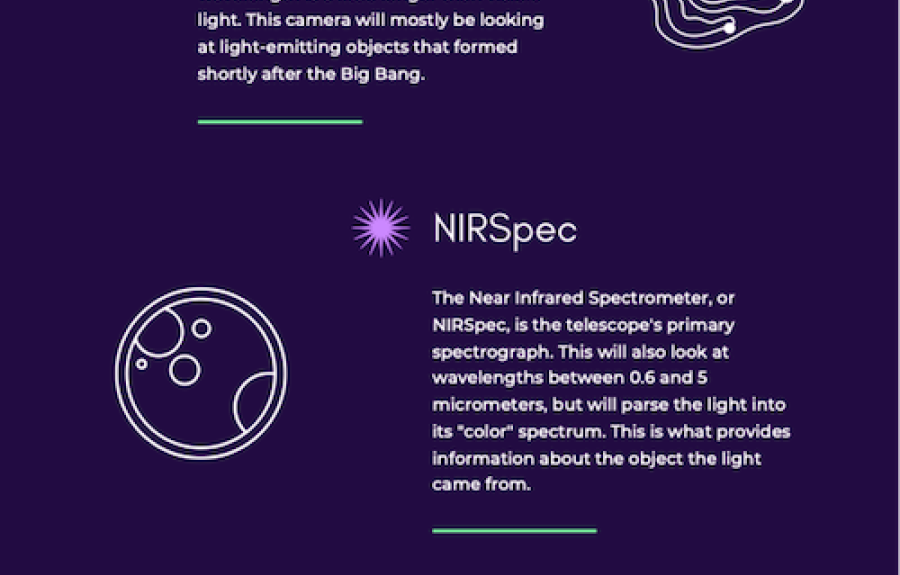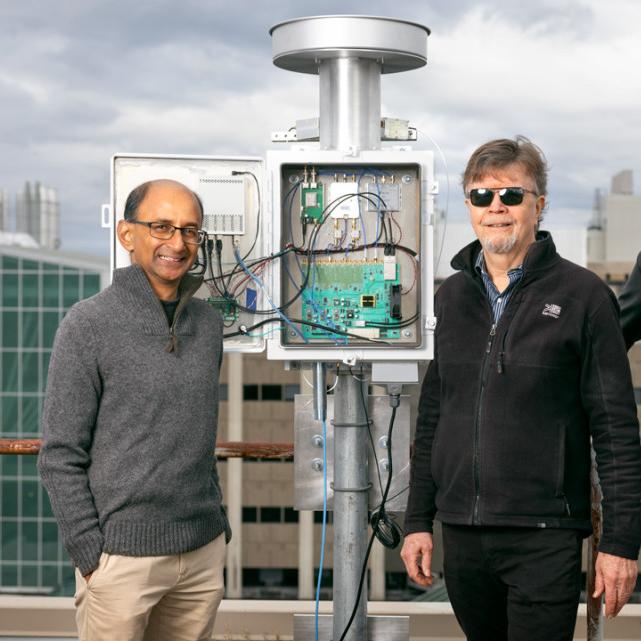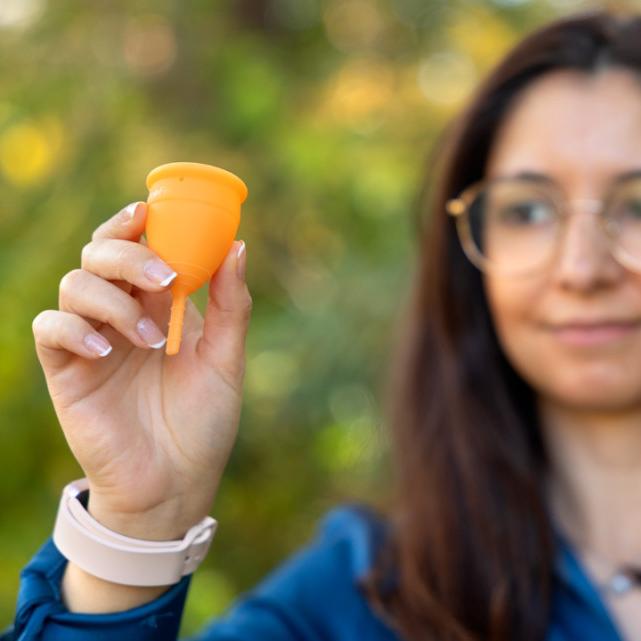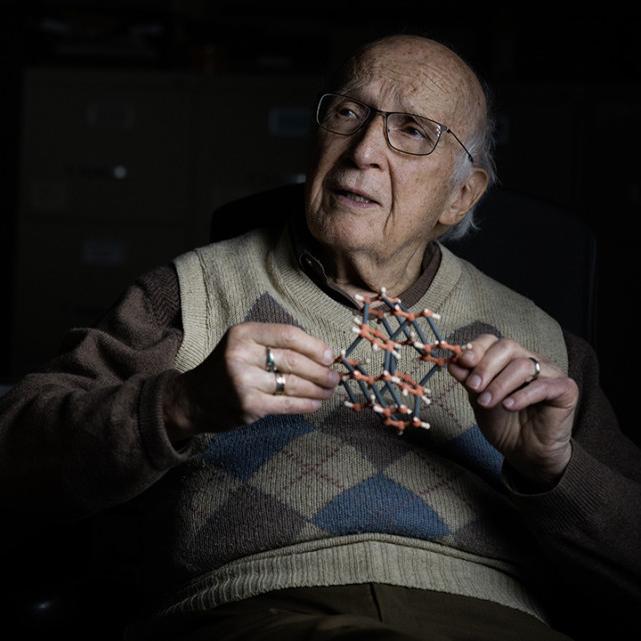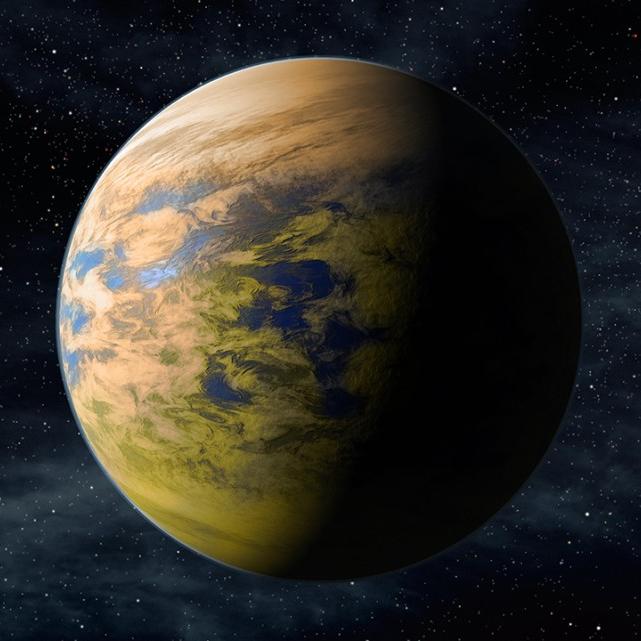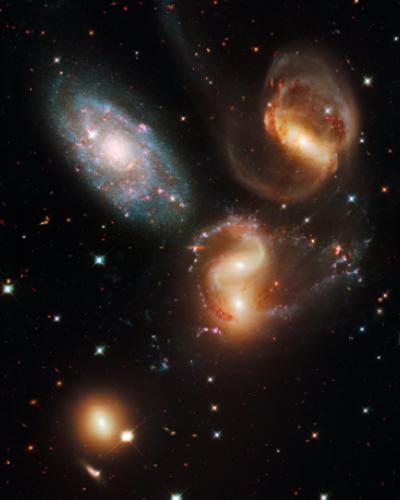The James Webb Space Telescope is scheduled to launch in December 2021. Regarded as the successor to the Hubble Space Telescope, it will peer deep into space and take images of distant astronomical objects. Most of the images we see from Hubble show galaxies, star clusters, or gas clouds. Here’s an image taken with Hubble’s Wide Field Camera 3, one of Hubble’s two cameras:
The galaxy on the upper left is 40 million light years away, and the other big galaxies that are visible are 300 million light years away. Hubble produces great images like this for galaxies that produce a lot of visible light that reaches Earth. Detecting visible light, however, is not always the best way to view things in space.
Even before the Hubble Space Telescope was put in space, a team of scientists proposed an idea for another telescope that would detect infrared light, initially called the Next Generation Space Telescope.
Hubble primarily looks at visible light, which is only a narrow part of the electromagnetic spectrum. Stars and galaxies emit light that falls into other parts of the spectrum as well, like ultraviolet (UV) and infrared (IR) light. Most things we want to look at produce a lot of visible light, like the galaxies shown above, but things change when the objects are really far away. Objects in space appear “redshifted” when they get farther away from your point of view: this is because the electromagnetic waves that make up light will appear stretched after traveling to us from a distant source. Objects that are really far away can undergo so much redshift that much of the visible light they emit appears as infrared light to us. This means that using a telescope with primarily infrared instruments will allow us to see these distant objects much better than we could by looking at their visible light.
Initially, scientists wanted the Next Generation Telescope to be placed in high Earth orbit or even on the Moon for optimal deep-space viewing. In the 1990s, when the project was formally proposed to NASA, they decided to place it even beyond the Moon’s orbit at a spot called a Lagrange Point. When two bodies are orbiting each other, like the Earth and the Sun, the balance of gravitational forces and centrifugal force creates five stable points around these bodies. Lagrange Point 2 (or L2) is the farthest point from Earth, lying far beyond the Moon. This makes it the perfect location for the new telescope. The project was accepted by NASA, who partnered with the European Space Agency and the Canadian Space Agency. Eventually it was renamed after James Webb, the NASA administrator during the Apollo era.
The James Webb Space Telescope was built specifically with redshift in mind, aimed toward seeing these distant stars and galaxies that are invisible to Hubble. Since these objects are so far away, many of them will appear very young, allowing scientists to study the formation of galaxies and planetary systems. It is also better equipped to study the far reaches of our universe, which can actually tell us about what the universe looked like shortly after the Big Bang.
Thought Box: How can looking at deep space tell us about the Big Bang?
________________________________________________________________________________
Looking far away in space is equivalent to looking back in time -- and the farther away we look, the farther back in time we can see. This is because light takes time to travel (300 million meters per second), so light takes longer to get to us coming from objects that are farther away. The universe, which is still expanding from the Big Bang, is also expanding at the speed of light. This means that if we can see light from the very edge of the universe, or even close to the edge of the universe, we would see it as if it just happened. It also means that some of the most distant galaxies will appear as if they just formed!
Now that we know the inspiration behind the James Webb Telescope, let’s dive into its structure and some of its components. Here’s a diagram from NASA:
Image: JWST NASA
The big yellow part, made up of hexagons, is the telescope’s primary mirror. The black piece behind it is the backplane, which supports the mirror. Together they make up the part labeled “Optical Telescope Element.” This is one of the most visually stunning and unique parts of the telescope, and this is the side which will be facing away from Earth and the Sun. The primary mirror is 6.5 meters wide, allowing it to capture more light than Hubble’s mirror (about 2.5 meters wide). The light it detects will reflect off of the primary mirror, which directs it toward a secondary mirror, which is held up by three legs and looks like a tripod. This secondary mirror will direct the light into a narrower opening in the middle of the primary mirror, where the telescope’s cameras and spectrographs will parse out the infrared light. These cameras and spectrographs are located behind the OTE, in the Integrated Science Instrument Module. There are four main instruments, shown here:
The sunshield is located below the OTE and ISIM. It separates the detecting instruments from the rest of the telescope, allowing the very sensitive mirrors and light-detecting instruments to be shielded from the sun and avoid electromagnetic signals that would create extra noise. It consists of five sheets to make sure that any radiation that penetrates through gets a chance to be reflected back out. Underneath the sunshield is the Spacecraft Bus, which carries all the other important components for the telescope to operate and communicate with Earth: the electrical system, the communication system, the thermal control system, et cetera. The Spacecraft Bus is strategically placed underneath the Sunshield so that it is both facing Earth and avoiding the mirrors.
To prepare for its launch in late December, the telescope must be folded up and attached to the rocket Ariane 5, a rocket provided by the European Space Agency. This prerequisite dictated ways in which the telescope had to be built to ensure it could travel efficiently. It will take about a month to reach L2, the orbital point where it will sit, unfolding very carefully as it travels there. The instruments will begin tuning, a several-month process. We will begin seeing images about six months after the launch.
The ability to see such distant objects is a huge step in scientific research. Scientists worldwide will be using Webb’s data for many kinds of research. I discussed the telescope and some of the research that will use its data with some of my associates at the at Cornell University. You can listen to at the YouTube Channel.

